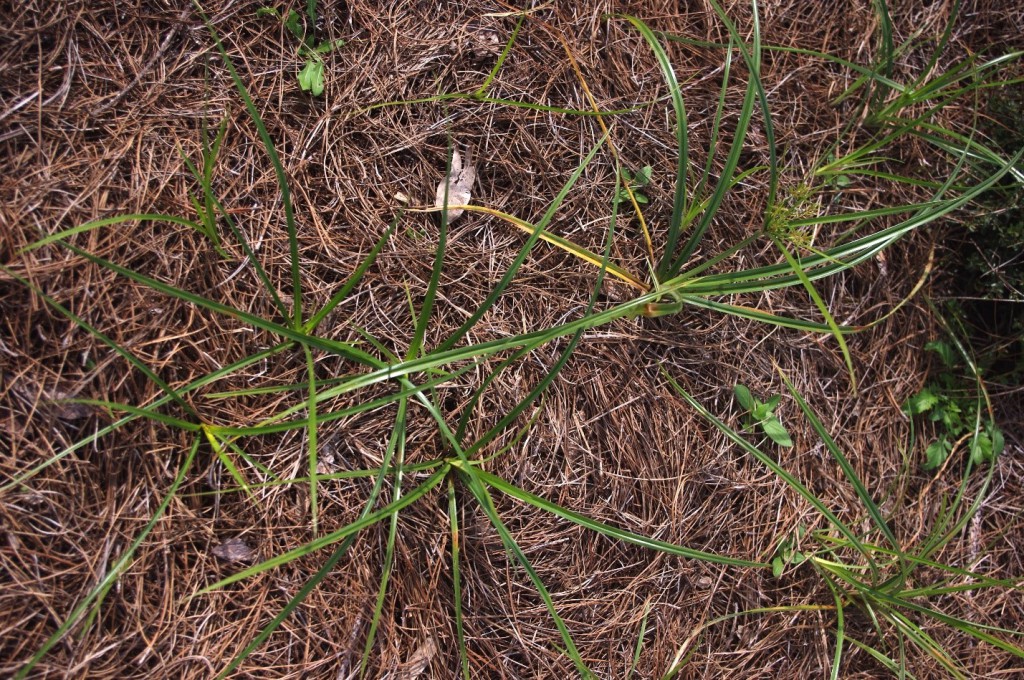Author: Dr. Chris Marble, UF/IFAS MREC
While the bulk of most residential weed control programs focus on controlling weeds in turf, weeds can also be very problematic in landscape planting beds. Controlling weeds in landscape beds can be very difficult because unlike turf, planting beds typically contain several different ornamental species that can range from trees to shrubs to herbaceous annuals and perennials.
One of the most common ways to control weeds in landscape planting beds is to make “spot treatments” of glyphosate to control escaped weeds. While this method is effective, it is important to remember that glyphosate is a systemic herbicide, meaning that it can move through plant tissues. Ensure that none of the spray contacts any leaf or stem tissues of desirable plants either through direct contact or through inadvertent drift. If contact is made, the plant tissues that were sprayed will need to be washed or pruned off as soon as possible to avoid further damage. Be especially mindful when applying near species that are known to sucker near the ground such as crape myrtles. Glyphosate can also cause damage when applied to young tree bark or to some trees with very thin bark. Herbicides that have only contact action can also cause damage to ornamentals but these herbicides will not move throughout the plant and the injury will remain localized. Contact herbicides are not as effective on perennial weeds such as Florida betony (Stachys floridana) or nutsedge species (Cyperus spp.).

Nutsedge can be very difficult to control. Photo Credit: Chris Marble, UF/IFAS
Mulching is one of the safest and most effective methods of weed control in landscape beds. Coarse textured mulches (such as pine bark nuggets) are typically preferred over smaller textured mulch because they provide a less favorable environment for weed seed germination. Mulch should be applied at a depth of 2 to 3 inches for best results. In addition to controlling weeds, mulch can also help to add organic matter to the soil and help to conserve water.
In addition to mulching and some postemergence herbicides, there are many preemergence herbicides that can be used “over-the-top” of hundreds of landscape plants. The same as with all pesticides, be sure to carefully read product labels before making a peemergence herbicide application to a landscape planting bed and make sure that your equipment is calibrated properly. Do not apply granular herbicides if plant foliage is wet and do not apply when the landscape plants have tender new flushes of growth. It is important to irrigate as soon as possible after applying preemergence herbicides to wash the herbicide off of plant foliage and to activate the herbicide. More information on specific herbicides that can be used in these areas and other precautions can be found at http://edis.ifas.ufl.edu/ep523.
As a final note, never apply “weed-n-feed” or other herbicides that are labeled only for use in turf areas to landscape planting beds. In most cases, these products can cause severe damage or death to landscape plants through drift and root uptake. Always be sure that the herbicide you are using is labeled for use in landscape planting beds and labeled for use on the ornamental species you have.
Latest posts by Blake Thaxton (see all)
- Growing Healthy Palms Workshop - July 20, 2016
- It is time to monitor for Rose Rosette Disease in Florida - May 24, 2016
- Too Late yet Too Early - March 24, 2016